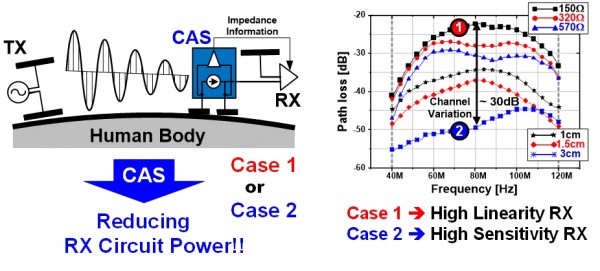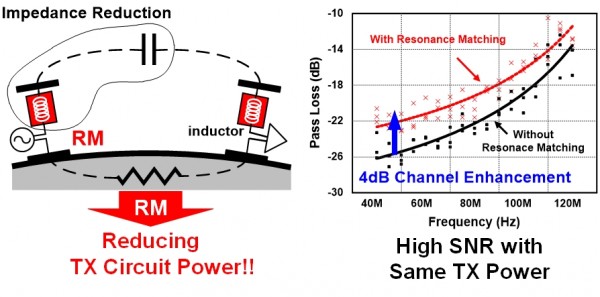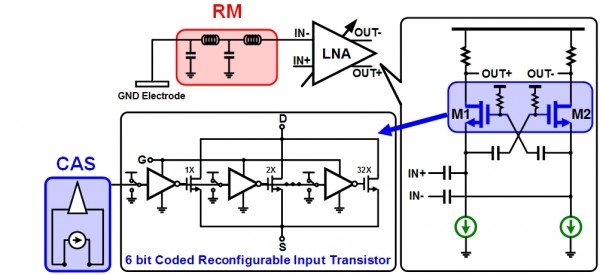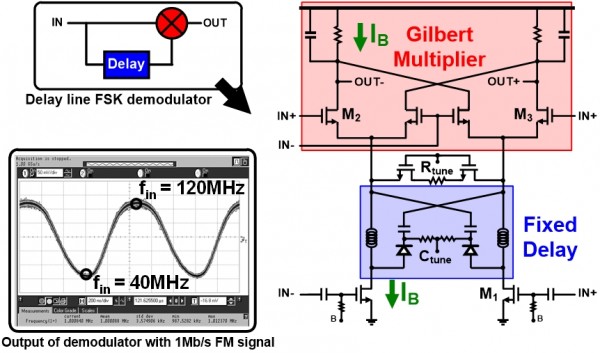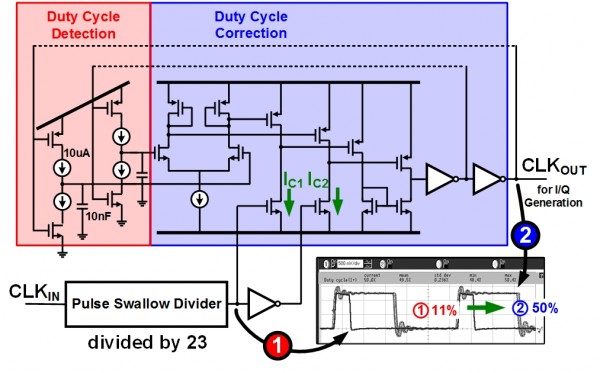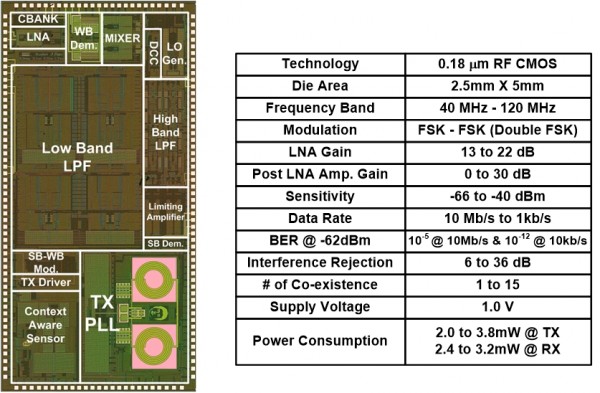Biocle IV
본문
Overview
Wirelss body-area networks (WBANs) are an emerging technology that can combine healthcare and consumer electronic applications around the human body. By continuously connecting and sharing the information around the human body, WBANs are expected to bring new convenient usages and application services to mobile devices. Previous BCC transceivers were not optimized for WBAN because the only phenomenological circuit/behavior models were used for the body-channel analysis, which means there was not a clear understanding of the on-body electric signal transmission mechanism. Moreover, they were unable to satisfy WBAN requirements such as energy efficiency, scalability of QoS, interference mitigation, and network co-existence simultaneously. In order to provide a clear understanding of the transmission mechanism, detail analysis was proceeded from the general solution of Maxwell’s equation. Based on this approach we proposed BCC transceiver that not only consumes the lowest energy but also fulfills the IEEE 802.15.6 Task Group specifications. It is possible by the theoretical analysis of physics behind the BCC which leads to the optimization of electric signal transmission through the human body as previously mentioned . Resonance matching (RM) and contact impedance sensing (CIS) are proposed for the sake of power reduction of the transceiver. In addition, for the full satisfaction of WBAN requirements, we adopt a double-FSK modulation scheme in combination with low-power circuit techniques such as a reconfigurable LNA/driver, current-reuse wideband demodulation, divider- based LO generation with duty-cycle corrector, and a divider-based modulator. Thanks to these features, a fully WBAN compatible receiver and transmitter consume 2.4 and 2 mW, respectively, at a data rate of 10 Mb/s, which corresponds to energy consumption of 0.24 nJ per received bit and 0.2 nJ per transmitted bit.

